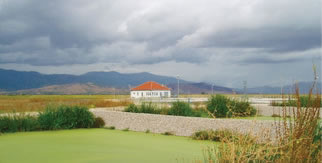
Management, Economics and Policy
Sustainable Water Resources Management Volume 3:
Case Studies on New Water Paradigm
Publication Date: January 2010
Cooperating Institution: Electric Power Research Institute (EPRI)
Principal Investigator: Bob Goldstein
Project Budget: $250,291
Project Identifier: DEC6SG06a
DESCRIPTION
This report identifies and evaluates the foundation and requirements for a sustainable water infrastructure at the community and watershed scales. The report will be of value not only to the public water supply, stormwater management, and wastewater treatment sectors, but also the electric power sector, given the strong interdependencies among the four sectors. In addition the report will be of value to government agencies involved in water regulations and policy.
Communities face many challenges with respect to meeting their water needs. These challenges include increased water scarcity and/or flooding associated with climate variability, economic uncertainty, a complex web of regulations and bureaucracy, aging and degrading infrastructure, pollution and impaired water resources, and a broad range of stakeholders with poor understanding of water issues. The objective of this research is to create a platform for communities to overcome these challenges through organizing around and operating under key sustainability principles and practices. The report uses examples and perspectives from two case study communities to offer real world context.
The project team recruited two communities (Tucson – Pima County AZ and Northern Kentucky) and an expert advisory panel to participate in a retreat to flesh out ideas for a new water infrastructure paradigm. The retreat took place in Hebron, Kentucky from June 1 – June 3, 2009. Thirty-five people comprised of research team members, case study community representatives and advisory panelists attended. The real-life circumstances for each of the two case study communities provided a basis for discussion to define a new water management paradigm. The group first discussed conceptual model components in the context of each community and then worked together to generate ideas for a broadly-applicable model for the new paradigm.
Based on input received at the retreat and follow-up research, the research team defined the new paradigm as a composite of five integrated components: 1) sustainability goals, 2) sustainability operating principles, 3) integrated technological architecture, 4) institutional capacity, and 5) adaptive management. Many of the core principles defined for the new paradigm contrast with past and current practices, for example, valuing all water as a resource, moving toward a performance based regulatory framework, aspiring toward better outcomes, and recognizing true costs while maximizing the value of action. The report constructs a framework for supporting a new sustainable water infrastructure paradigm. The framework includes an integrated planning structure that connects current institutional silos, a technical toolbox to use in the context of performance-based requirements at the watershed and community scale, regulatory flexibility to encourage innovation and affect better outcomes, research and demonstration to build knowledge and capacity, new partnerships and funding mechanisms, and a variety of means for engaging the community stakeholders to broaden support and affect better outcomes.
As more communities and the nation as a whole drive to become sustainable and measure progress through triple-bottom line indicators, environmental, economic, and social; they are seeking guidance in developing their approaches to particular problems. This report provides a foundation for others to build upon and/or refine in developing a new approach to water management. Knowledge on sustainable practices and technological architectures increases on a daily basis, but to achieve success it is equally important to address institutional barriers and operate in an integrated manner. Future efforts should continue to focus on the practical means for replacing old practices and institutional approaches with new ones in line with an ever-changing environment.

